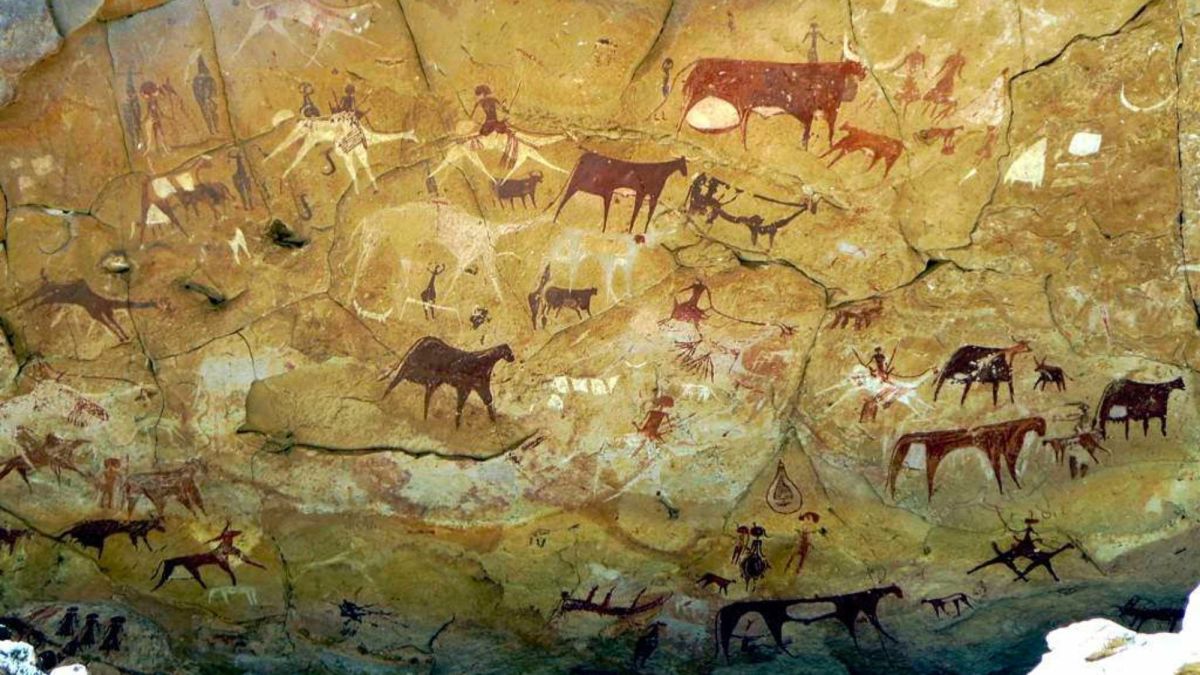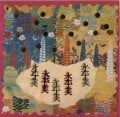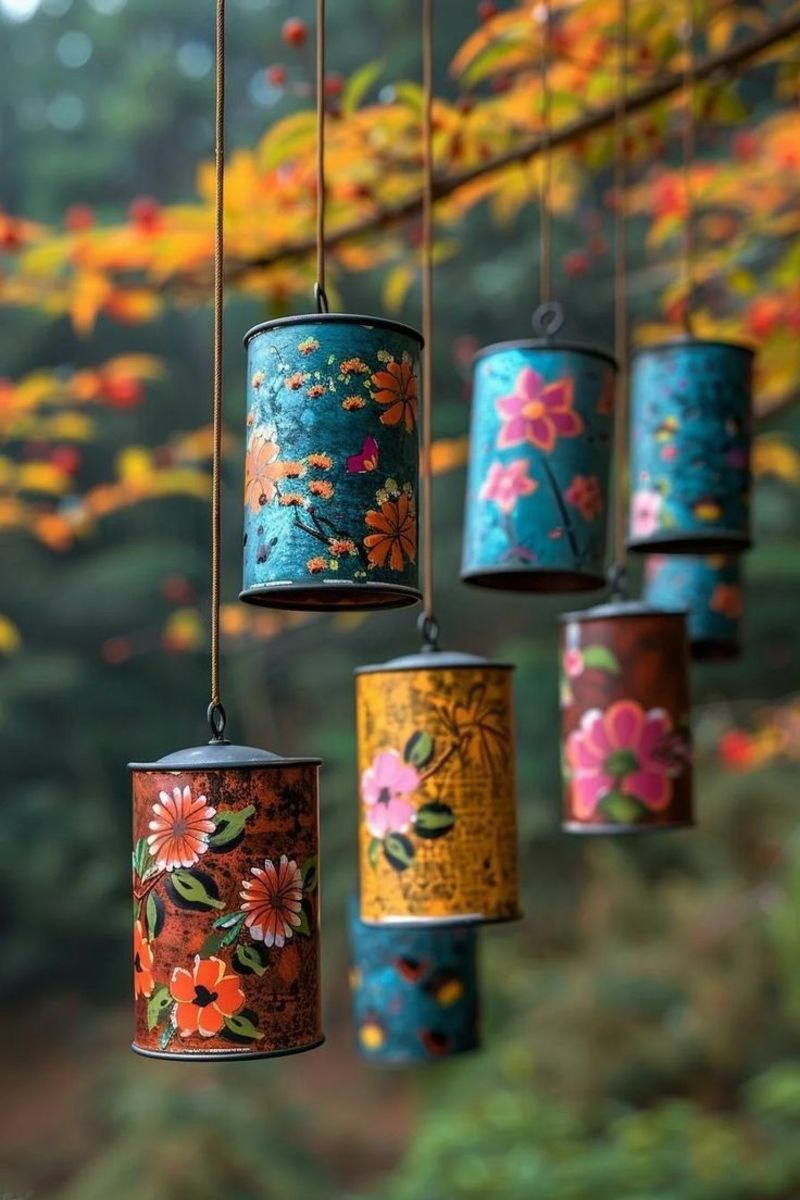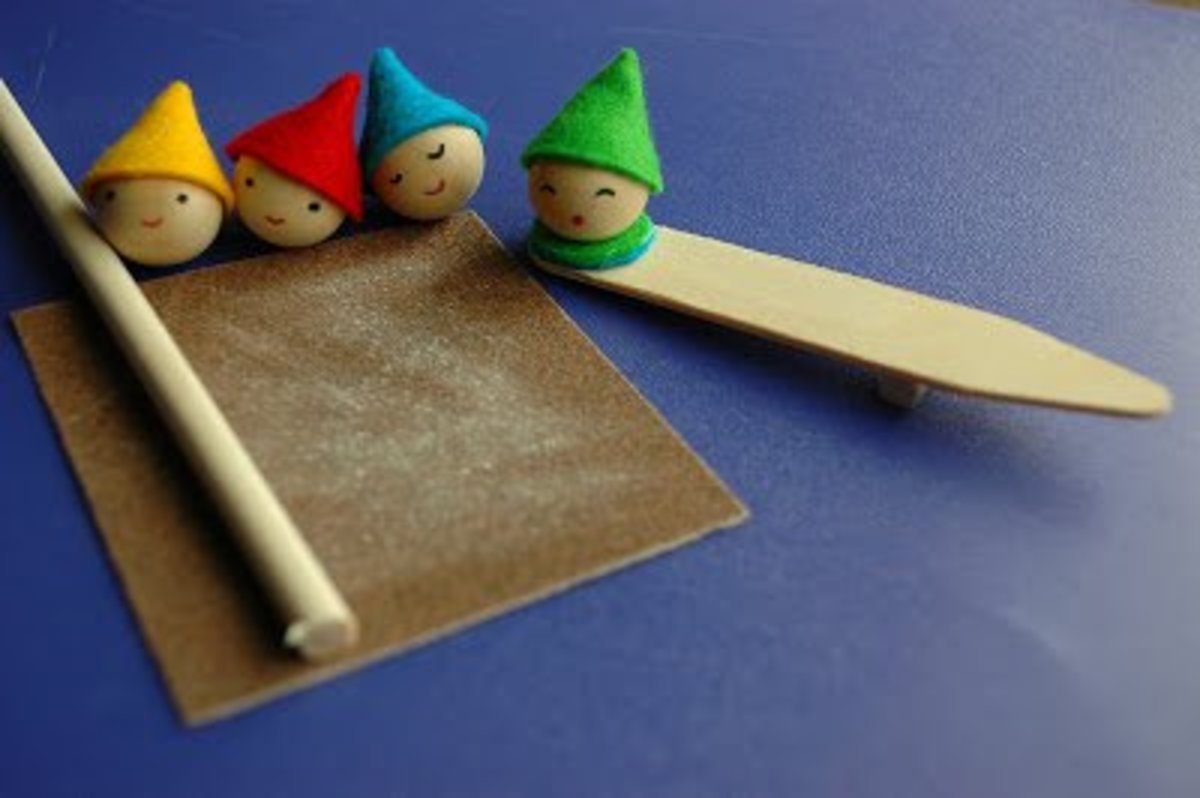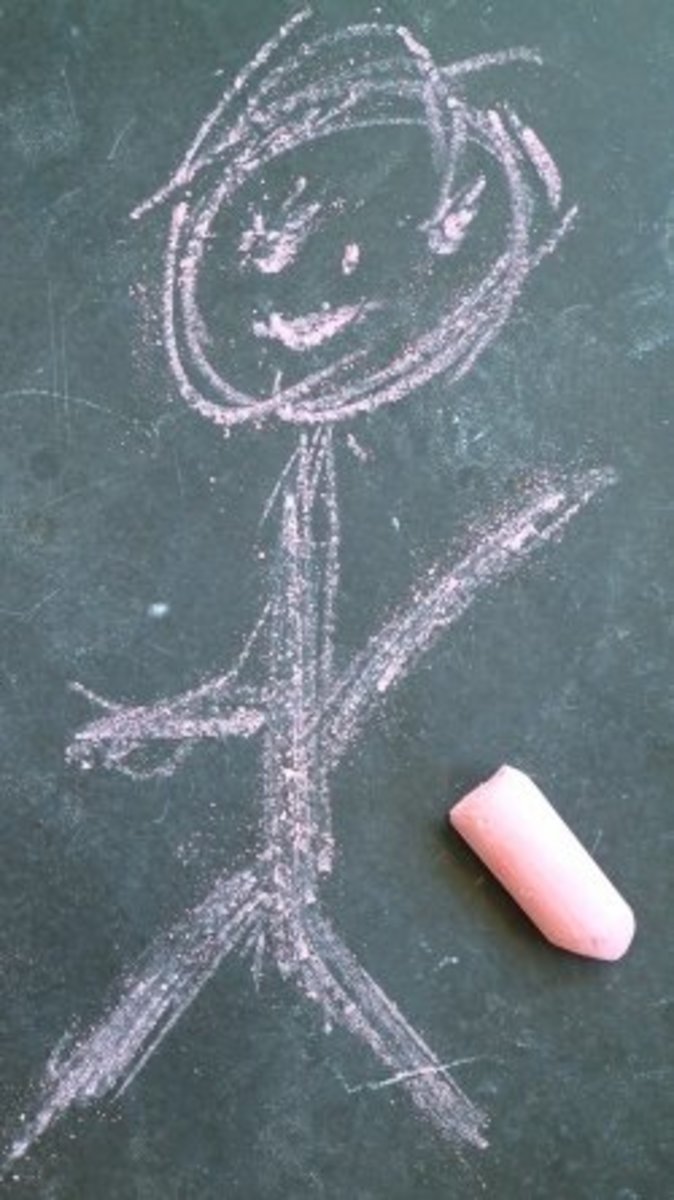Maya Art
The art of the Maya flourished during the classic period because Maya kings liked to be surrounded by beautiful items that showed the wealth of their cities. Artists painted vibrant scenes of royal life on temple walls. Some of the items made by Maya artists were meant only for a king’s tomb.
One of the most beautiful tomb pieces found by archaeologists is a jadeite death mask. The artist who made it fitted many pieces of the hard, green stone together to represent the “ideal” Maya face. To the Maya, the most beautiful people had long oval heads, slightly slanting eyes, long curving noses, and fleshy lips.

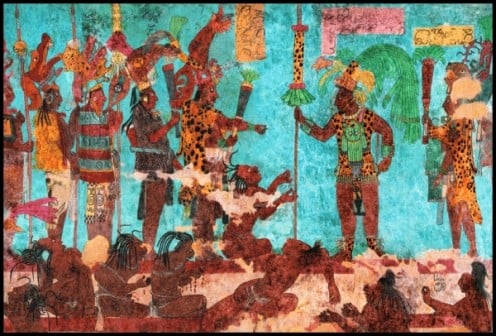
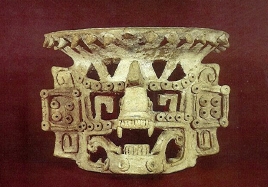
The Focus of Maya Art
Maya art focused primarily on the themes of blood sacrifices, war, and the deeds and achievements of great Maya rulers.
The ancient Maya did not think it was important to show happy families playing with their children, or laborers straining to build the great pyramids under the sweltering sun.
Instead, art depicted special ceremonies, such as kings and queens cutting their bodies to offer their blood to the gods.
Artists also liked to show war captives being presented to victorious kings as they reclined on their thrones.
They even painted the blood that dripped from prisoners as they were tortured by the king’s warriors to please the royal family, the onlookers or the Gods.

Heroic King as The Objects of Maya Art
As the most important people in their cities, kings wanted to see their lives recorded.
Stelae carvings were the primary way that kings displayed their power and accomplishments.
Kings were always the central figures in the limestone and sandstone carvings, though they were often surrounded in the carvings by other people.
Most artists carved figures in profile, facing left, and most ancient Maya carvings tend to look flat, rather than three-dimensional.
Many artists were members of Maya royal families, and the often signed their names on their work. In fact, the Maya represent the only Mesoamerican culture in which artists took credit for their own pieces.
From The Songs of Dzitbalche
Put on your beautiful clothes;
the day of happiness has arrived;
comb the tangles from your hair;
put on your most attractive clothes
and your splendid leather;
hang great pendants in the lobes of
your ears; put on
a good belt; string garlands
around your shapely throat;
put shining coils
on your plump upper arms.
Glorious you will be seen,
for none is more beautiful here
in this town, the seat of Dzitbalche.
I love you, beautiful lady.
I want you to be seen; in
truth you are very alluring,
I compare you to the smoking star
because they desire you up to the moon
and in the flowers of the fields.
Pure and white are your clothes, maiden.
Go give happiness with your laugh,
put goodness in your heart, because today
is the moment of happiness; all people
put their goodness in you.
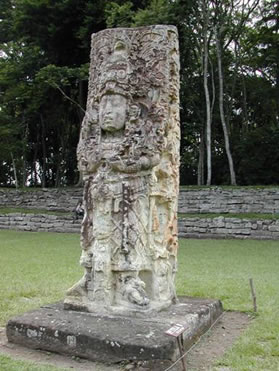
Magnificent Clothing of Kings, Priests, and Nobles
The often magnificent clothing of kings, priests, and other nobles is clearly visible in Maya carvings. The finely woven cloth used to make these clothes was produced by Maya weavers and embroiderers.
For special ceremonies, weavers produced costumes for kings, priests, and nobles that were even more elaborate. Sometimes, the weavers even wove pearls and feathers right into material when it was intended for royal clothing.
Very few pieces of clothing made and worn by the ancient Maya survive today. Central America is so humid that fabrics deteriorate relatively quickly.
Archaeologists have had to look at the clues left by Maya artists to discover how Maya royalty dressed. Wall frescos and pottery contain some of this information.
Archaeologists know, for example, that during special ceremonies, kings wore headdresses decorated with jadeite, turquoise, and bird feathers and cloaks made from spotted jaguar pelts.
The spotted pelts were prized by priests and kings because they believed the spots represented the stars and that jaguars helped them to communicate with the spirit world. Maya kings also believed that jaguars protected royal families.
Jaguars look a lot like leopards, but their fur has bigger black-rimmed spots called rosettes. The Central American rainforests offer them plenty of cover as they stalk their prey. Jaguars have the strongest jaw of any cat found on the planet.
They can easily bite through a turtle’s shell or the skull of an animal. Because of their power, many Maya kings added “Jaguar” to their name, including Yaxchilán kings Shield Jaguar and Bird Jaguar.
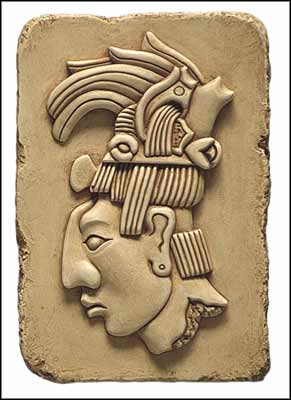

Beauty in The Eyes of The Maya
The average height of an ancient Maya man was just over 5 feet; for women, it was 4 feet 8 inches. Typically, they had dark skin, dark eyes, and large noses that curved or hooked like an eagle’s beak. The king and other nobles emphasized this feature by building the hook even higher with clay.
The Maya worshipped Yum-Kaax, the god of corn, and they believed people were more attractive with elongated heads that resembled the shape of a cornstalk. To mold the heads of their babies into this long oval shape, they tied them to a board within several days of their birth. Another board was attached at an angle and the boards were brought together over the front of the head. The pressure of the boards was slowly increased over several days until the baby’s skull was deformed.
As the Maya nobles also valued crossed eyes, Maya mothers hung a piece of thread, weighted by a rubber ball or stone, between the infant’s eyes, hoping they would permanently cross!
- Maya Jadeite Jewelry
Mayan royals wore a lot of jewelry. They wore bracelets, nose plugs, ear plugs, earrings, knee bands, anklets, necklaces, bracelets, rings, and pendants made from shark and crocodile teeth and claws, shells, obsidian, bone, wood, polished stone. The - Maya Pottery
Maya artists produced world-class pottery. To make their pottery, the ancient Maya used clay from the riverbeds. They strengthened it by adding calcite, quartz, or volcanic ash. - The Maya Codices
Maya scribes spent their time writing in special books made of paper called codices. In these books, scribes faithfully recorded centuries of Maya history, astronomical calculations, and religious practices. Some of the Maya codices even recorded tra
If you are looking to buy contemporary Mayan art, Lela A. Cargill is the person you need to see.


